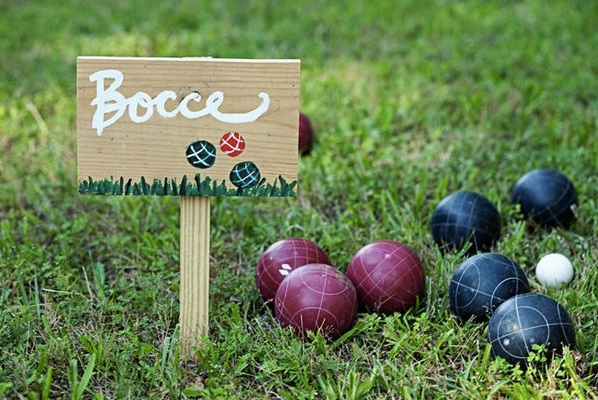
For centuries, people have been playing games that require tossing balls. The ancient Greeks used round stones (spheristics), and threw the balls as far as possible. The Romans played the game as a pass-time between battles in the Punic Wars. Although eventually they used wooden balls covered with iron, originally they used coconuts, brought back from North Africa. While the Greeks wanted to show brute strength with the game, the Romans preferred the skill of tossing at a target ball, similar to a cochonnet. It is said they learned the concept of the game from ancient Egyptians.
For a time, this type of game disappeared, only to become popular once again during the Middle Ages as a game called “bouleurs. “ During the Renaissance, the sport became so popular it was outlawed by Charles IV and then Charles V, because it took too much time away from archery and other military pursuits.
The Catholic Church condemned the game by declaring it a form of gambling, but in the 16th century, Pope Julius II sought to use it to bring power to the Holy See. He brought together the best bouleurs to form a “redoubtable company of rock throwers.” They played well against the French, Venetians and Spaniards.
During the Franco-Italian wars, boules returned to France. Rebelais is quoted as saying, “Neither rheumatism nor any other malady can prevent anyone from playing this game: it is suitable for all ages, from the very young to old age.”
Warriors continued to play a boules-type game, and a game of boules delayed Sir Francis Drake sailing to fight the Spanish Armada. He was mid-game when he received news of the impending attack. “First we finish the game, then we’ll deal with the Armada.” It might of saved his fleet, since he was not caught in the same storm which sank the Spaniards!
Boules grew in popularity. Differences began to appear, splitting the sport into different styles. France studded traditional wooden boules with nails, while in Italy, wooden boules prevailed, but were varnished.
In 1629, boules were banished again. Paumes, the precursor to tennis, had appeared, and the manufactures of paumes equipment conspired together to have boules forbidden. The game of boules was continued in secret, however, especially in monasteries, where monks first built covered pistes.
The ban lasted only a few years, and boules rose again in popularity. Danger, however, became part of the game at times. In Marseille in 1792, a game of boules left 38 dead, when a group of soldiers played a game using cannon balls as boules at a convent where kegs of gunpowder were being stored.
In Provençe, during the 18th century, variations of boules became very popular: longue, butaban, and roulette. Longue eventually overshadowed the other two games, becoming the dominant game in the early 19th century. The boules were made of box wood, sheathed in nails. However, the boules were dangerous, and often bystanders complained of injuries. The game was forbidden to be played in public areas, but boules continued at cafés and in private gardens.
Eventually boules evolved in each country, giving birth to Bocce in Italy, lawn bowling in England, and Boule Lyonnaise in France. In these games, the player takes 1-3 steps before throwing the boule.

There are several variations on how pétanque came into being. The most popular surround a little port town between Marseilles and Toulon called La Ciotat. There they played a game called jeu provençal, where, as with other variations, steps were taken before casting the boule: one step if you were pointing, and three steps if you were shooting.
A man named Jules LeNoir loved the sport deeply, and he became unable to take the steps necessary to play the current game. Some stories have it that he was confined to a wheelchair, while others say he had developed a bad case of arthritis allowing him to stand, but not take the steps. Because of his inability to take the steps, the villagers re-made the rules to allow him to continue to play his beloved game.
A new rule stipulated that a circle be drawn in the dirt, and players must place both feet within the circle, and no run-up was allowed. The regional dialect called this “pieds tanques,” which meant “feet anchored.” Pronounced with the proper Provençal accent, the words sound very similar to “Pétanque,” as the game eventually came to be called. As a result of this new rule, the game can be played by people with any number of disabilities, and it’s not uncommon to see players today in wheelchairs.
The first formal pétanque championship was held in La Ciotat in 1910, and over a century later, we still play this much-loved version of the game.
